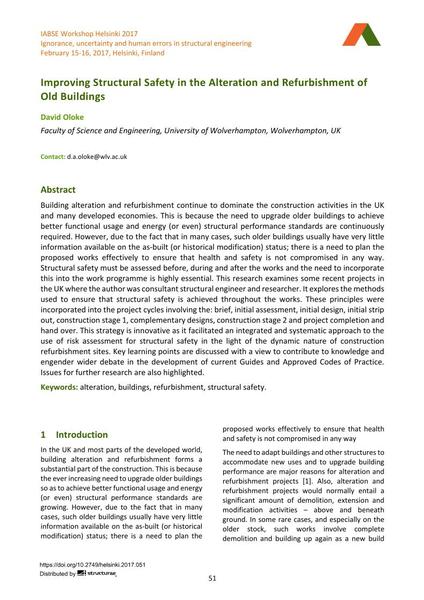| Médium: |
papier de conférence |
| Langue(s): |
anglais
|
| Conférence: |
IABSE Workshop: Ignorance, Uncertainty, and Human Errors in Structural Engineering, Helsinki, Finland, 15-16 February 2017 |
| Publié dans: |
IABSE Workshop Helsinki 2017 |
|
Page(s):
|
51-58
|
Nombre total de pages (du PDF): |
8 |
|
|
Page(s):
|
51-58
|
| Nombre total de pages (du PDF): |
8 |
| DOI: |
10.2749/helsinki.2017.051 |
|
Abstrait:
|
Building alteration and refurbishment continue to dominate the construction activities in the UK and many developed economies. This is because the need to upgrade older buildings to achieve better functional usage and energy (or even) structural performance standards are continuously required. However, due to the fact that in many cases, such older buildings usually have very little information available on the as-built (or historical modification) status; there is a need to plan the proposed works effectively to ensure that health and safety is not compromised in any way. Structural safety must be assessed before, during and after the works and the need to incorporate this into the work programme is highly essential. This research examines some recent projects in the UK where the author was consultant structural engineer and researcher. It explores the methods used to ensure that structural safety is achieved throughout the works. These principles were incorporated into the project cycles involving the: brief, initial assessment, initial design, initial strip out, construction stage 1, complementary designs, construction stage 2 and project completion and hand over. This strategy is innovative as it facilitated an integrated and systematic approach to the use of risk assessment for structural safety in the light of the dynamic nature of construction refurbishment sites. Key learning points are discussed with a view to contribute to knowledge and engender wider debate in the development of current Guides and Approved Codes of Practice. Issues for further research are also highlighted.
|

